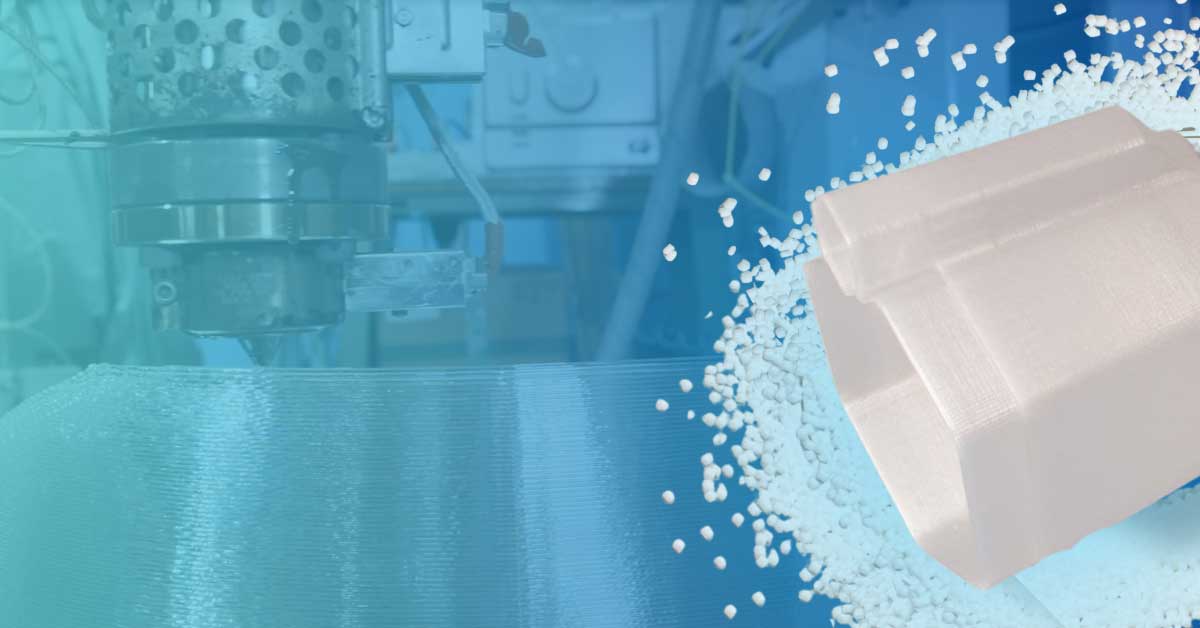Direct 3D printing from FGF/LFAM granule is gaining popularity due to the growing variety of application areas and increased possibilities in terms of materials that can be used. LATI3Dlab has developed a wide range of AM technical compounds designed to ensure excellent printability and maximum performance for this challenging technology.
FGF and FFF 3D printing
When people talk about 3D printing by layer deposition, they commonly think of FFF (Fused Filament Fabrication). This technology is the cheapest and most popular, with a wide choice of printers (from entry-level to professional) and materials that can be used.
In parallel, Fused Granulated Fabrication (FGF), i.e., direct 3D printing from granule, is increasingly gaining momentum as it offers the possibility of bypassing the extrusion of the material – whether it is a polymer as is or loaded/reinforced compound – into filament. What are the advantages?
- Reduced costs in the supply chain
- Improved thermal and mechanical properties of the molded part
- Freedom of formulation: greater flexibility in material choice without the constraints of extrudability and filament flexibility.
Is FGF 3D printing always advantageous?
Despite its many advantages, FGF technology has some limitations. Nowadays, it is impossible to produce little artifacts with nice aesthetics using “benchtop” granule printers. The main applications involve large parts, where visible layers are not a problem and can be exploited to achieve aesthetic textures or be “smoothed” by post-processing and eventual painting.
Large Format Additive Manufacturing (LFAM) FGF 3D printing is increasingly popular in areas such as:
- Design: to produce installations, street furniture, seating, chandeliers
- Industry: to produce molds for composites, functional parts, hulls, bicycle bodies, and other vehicles.
Carbon fiber-reinforced versions offer excellent structural properties, dimensional stability, easy post-processability, and paintability.
Materials Developed by LATI3Dlab for FGF Technology
LATI3Dlab, which has been engaged in the development of AM materials for 3D filament technology for many years, has developed materials specifically for FGF technology that are ideal for large-scale printing. Types of materials within the LATI3Dlab product portfolio include:
- Classical: PETg and PC, including recycled (LATIECO AM) and self-extinguishing versions (PETG V0 and PC V0)
- UV stabilized: for outdoor use
- Glass and carbon fiber reinforced: for superior mechanical properties and dimensional stability
In the specific case of technical compounds intended for LFAM, it is possible to find:
- PC/PBT and PC/PETg blends: also in their mechanical recycling versions, reinforced with 30 percent glass fiber and carbon fiber.
- PA12 and PPS: 30% carbon fiber reinforced for more challenging applications.
These materials are designed for optimum molding, excellent dimensional stability, and high thermo-mechanical properties.
Want to learn more? Discover our AM range for FFF and FGF technologies.


